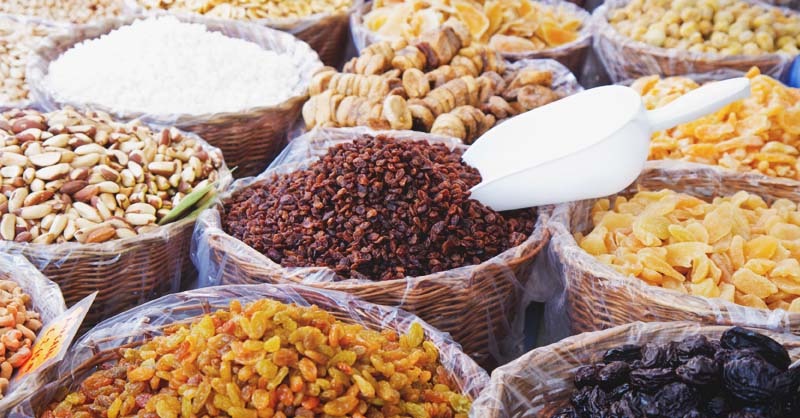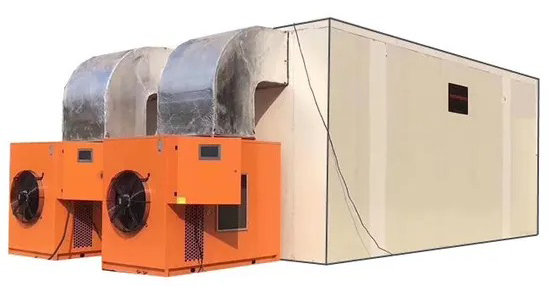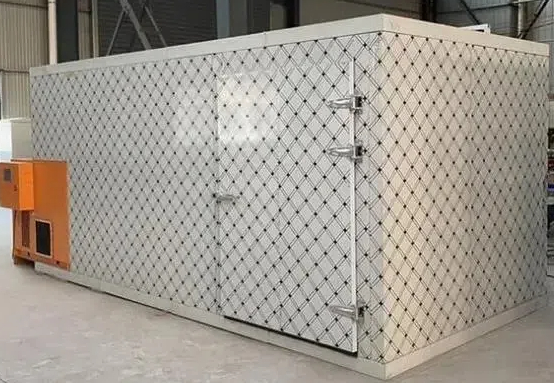
Content Menu
● Understanding Heat Pump Dryers
● Advantages of Heat Pump Dryers in Food Dehydration
● How Heat Pump Dryers Work
● Health Benefits of Using a Food Dehydrator
● Practical Applications of Heat Pump Dryers
● Environmental Impact
● User Tips for Effective Drying
● Conclusion
● FAQs
>> 1. What is a heat pump dryer?
>> 2. How does a heat pump dryer differ from traditional dryers?
>> 3. Can I use a heat pump dryer for dehydrating fruits?
>> 4. How long can dehydrated foods last?
>> 5. Are there any health benefits associated with dehydrated foods?
● Citations:
Heat pump dryers are becoming increasingly popular due to their energy efficiency and gentle drying capabilities. This article will explore the various benefits of heat pump dryers, particularly in the context of food dehydrators, and how they can enhance food preservation.

Understanding Heat Pump Dryers
A heat pump dryer operates using a closed-loop system that recycles heated air to dry clothes or food items. Unlike traditional dryers that vent hot air outside, heat pump dryers utilize a refrigerant to remove moisture from the air, making them more energy-efficient. This technology not only saves electricity but also allows for lower drying temperatures, which is crucial for preserving the quality of delicate foods.
Advantages of Heat Pump Dryers in Food Dehydration
- Energy Efficiency: Heat pump dryers consume significantly less energy compared to conventional dryers. They can reduce energy usage by up to 50%, making them an environmentally friendly choice for food preservation.
- Gentle Drying: The lower temperatures used in heat pump dryers help maintain the nutritional integrity of food. This is particularly important for fruits and vegetables, as high temperatures can degrade vitamins and minerals.
- Versatile Placement: Since heat pump dryers do not require external venting, they can be placed in various locations within a home or commercial kitchen. This flexibility allows users to maximize space while ensuring efficient food drying.
- Long Shelf Life: By effectively removing moisture from foods, heat pump dryers extend the shelf life of dehydrated products. Foods can be preserved for months or even years without losing their flavor or nutritional value.
- Cost-Effective: Although the initial investment in a heat pump dryer may be higher than traditional models, the long-term savings on energy bills and reduced food waste make them a cost-effective solution for both home and commercial use.
How Heat Pump Dryers Work
Heat pump dryers utilize several key components to achieve efficient drying:
1. Heat Source: The dryer contains a built-in heating element that raises the temperature of the air inside the unit.
2. Fan and Airflow: A fan circulates warm air throughout the drying chamber, ensuring even drying of all food items placed within.
3. Trays and Racks: Food is arranged on trays that allow airflow around each piece, preventing moisture buildup and promoting uniform dehydration.
4. Temperature Control: Most modern heat pump dryers come with adjustable temperature settings, allowing users to customize the drying process based on the type of food being dehydrated.
5. Condensation System: The moisture-laden air is passed through a condenser where it cools down, causing water vapor to condense into liquid form. This water is then collected in a reservoir or drained away, ensuring that the air remains dry for continued efficient drying.
Health Benefits of Using a Food Dehydrator
Using a heat pump dryer as a food dehydrator offers numerous health benefits:
- Nutrient Preservation: Dehydration helps retain essential vitamins and minerals that might be lost during other preservation methods like canning or freezing.
- Healthy Snacking: Dried fruits and vegetables make nutritious snacks without added sugars or preservatives, promoting healthier eating habits.
- Reduced Risk of Foodborne Illnesses: The dehydration process minimizes moisture content, which hinders the growth of bacteria and mold, thus lowering the risk of food poisoning.
- Increased Fiber Content: Dehydrated foods often have higher fiber content, contributing to improved digestion and overall health.
- Control Over Ingredients: When you dehydrate your own foods at home, you have complete control over what goes into your snacks. You can avoid preservatives, artificial colors, and excessive sugars found in many commercially produced dried foods.
Practical Applications of Heat Pump Dryers
Heat pump dryers are not limited to just clothing; they have versatile applications in food preservation:
- Fruits and Vegetables: Ideal for creating dried snacks from apples, bananas, tomatoes, and more. The gentle drying process ensures that these foods retain their color and flavor while becoming lightweight and shelf-stable.
- Herbs and Spices: Perfect for drying herbs like basil or oregano, enhancing their flavor without losing potency. Dried herbs can be stored for longer periods without spoilage.
- Jerky Production: Meat can be dehydrated safely at low temperatures, resulting in healthy jerky options without preservatives. This method allows for flavorful jerky that retains its nutrients while being a great source of protein for snacking.
- Snack Foods: Create your own trail mixes by dehydrating nuts and seeds along with fruits. This not only enhances taste but also provides a healthy snack option rich in nutrients.

Environmental Impact
The adoption of heat pump dryers also has positive implications for environmental sustainability:
- Reduced Carbon Footprint: By consuming less energy than traditional dryers, heat pump dryers contribute to lower greenhouse gas emissions associated with electricity production.
- Less Food Waste: With improved preservation methods through dehydration, households can reduce food waste significantly. By extending the shelf life of perishable items, consumers are less likely to throw away spoiled food.
- Sustainable Practices: Many manufacturers are now focusing on producing energy-efficient appliances that align with sustainable practices. Investing in such technology supports companies committed to reducing their environmental impact.
User Tips for Effective Drying
To maximize the benefits of using a heat pump dryer for dehydrating foods:
- Pre-Treat Certain Foods: Some fruits may benefit from pre-treatment with lemon juice or ascorbic acid to prevent browning during dehydration.
- Cut Uniformly: Ensure that all pieces are cut uniformly to promote even drying. Thicker pieces will take longer to dry than thinner ones.
- Monitor Drying Times: Keep an eye on your food during the drying process; different types may require varying amounts of time to dehydrate fully.
- Store Properly After Drying: Once dried, store your foods in airtight containers away from light and moisture to maintain freshness.
Conclusion
In summary, heat pump dryers offer significant advantages for both laundry and food dehydration. Their energy efficiency, gentle drying capabilities, and versatility make them an excellent choice for anyone looking to preserve food effectively while maintaining its nutritional value. As more consumers become aware of these benefits, heat pump dryers are likely to become a staple in kitchens around the world. Investing in this technology not only supports healthier eating habits but also contributes positively to environmental sustainability by reducing energy consumption and minimizing waste.

FAQs
1. What is a heat pump dryer?
A heat pump dryer is an appliance that uses a closed-loop system to recycle hot air for drying clothes or foods efficiently without venting moisture outside.
2. How does a heat pump dryer differ from traditional dryers?
Unlike traditional dryers that expel hot air outside, heat pump dryers reuse heated air within the machine, making them more energy-efficient and gentler on fabrics or foods.
3. Can I use a heat pump dryer for dehydrating fruits?
Yes, heat pump dryers are excellent for dehydrating fruits as they operate at lower temperatures that preserve nutrients while effectively removing moisture.
4. How long can dehydrated foods last?
When properly stored, dehydrated foods can last several months to years without significant loss of flavor or nutritional value.
5. Are there any health benefits associated with dehydrated foods?
Yes, dehydrated foods retain most nutrients and are free from preservatives, making them healthier snack options compared to many processed alternatives.
Citations:
[1] https://www.familyhandyman.com/article/heat-pump-dryer/
[2] https://www.bosch-home.com.sg/experience-bosch/living-with-bosch/fresh-reads/6-reasons-why-you-need-a-bosch-heat-pump-dryer-in-your-life
[3] https://airtekdehydrator.com/health-advantages-using-food-dehydrator/
[4] https://www.alamy.com/stock-photo/food-dehydrator.html
[5] https://www.youtube.com/watch?v=9DSGcVhjHEc
[6] https://www.youtube.com/watch?v=TsC60QBhSPo
[7] https://www.aztecappliance.com/blog/pros-cons-of-heat-pump-dryer
[8] https://www.energystar.gov/products/clothes_dryers/heat-pump-dryer
[9] https://etsolutions.in/how-does-a-food-dehydrator-work-explore-the-benefits-of-food-dehydrators/
[10] https://www.istockphoto.com/photos/food-dehydrator
[11] https://www.youtube.com/watch?v=mtDzdYoyeR8
[12] https://www.youtube.com/watch?v=ORHJ8WiBE8g












